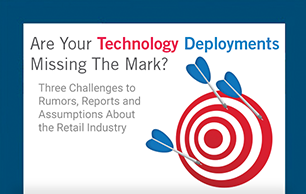 The explosion of remote work and hybrid workplaces coupled with the “Great Resignation” just made enterprise device management a lot more complicated. Technologies from laptops to mobile devices are essential to worker productivity starting day one on the job. The growing variety and volume of different devices and disparate work situations make employee device provisioning a critical but complex and time-consuming activity that can monopolize already-taxed IT teams.
The explosion of remote work and hybrid workplaces coupled with the “Great Resignation” just made enterprise device management a lot more complicated. Technologies from laptops to mobile devices are essential to worker productivity starting day one on the job. The growing variety and volume of different devices and disparate work situations make employee device provisioning a critical but complex and time-consuming activity that can monopolize already-taxed IT teams.
Complexities of device provisioning
Consider some of the complexities associated with device provisioning in the modern workplace.
- Accommodating remote work – The practice of remote work has exploded since the pandemic. According to a study from McKinsey, 58% of workers have the opportunity to work from home at least one time a week. According to that same report, 35% of workers are remote on a full-time basis. When it comes to device provisioning, that means that equipment must be configured and shipped to the employee’s home, which can quickly become burdensome with a large number of employees, addresses and custom configured devices.
- Simultaneously providing security and access – Offering security and access are two conflicting objectives, which must be handled with the utmost precision. Depending on their roles, employees need access to different systems and must be assigned different roles within those systems. For example, an accounts payable specialist may need access to the financial system, but would not be granted the same level of visibility as the CFO. The complexity of correctly configuring access for every employee is time consuming and yet critical to security.
- Handling repairs and upgrades – Whether associated with accidental damage or typical wear-and-tear, employee devices require repair and replacement in an expedient manner that disrupts productivity as little as possible. This requires maintaining an inventory of devices on hand that can be quickly configured to spec and shipped to the employee as well as a team to receive the broken equipment, assess its condition and repair or securely dispose of it.
- Offboarding – According to Gartner, the annual employee turnover rate in 2022 was approximately 20% or higher. That level of turnover requires offboarding services to collect devices from employees who are departing, removing personal information and configuring devices for secure reuse.
- Keeping up with stocks of devices – Maintaining seed stocks of all the different employee devices can be challenging and can also occupy valuable office space. From laptops and docking stations to headsets, monitors and mobile devices, the variety of devices requires both organization and physical space.
Resources to help with device provisioning and offboarding
In light of these complexities, IT teams can end up allocating a good portion of their time and resources to employee device provisioning. Fortunately, Telaid is willing and able to step in and get our hands dirty when it comes to managing this critical but complicated task. Equipped with our state-of-the-art Technology Solution Center just outside of Atlanta, Georgia, Telaid can warehouse seed stocks of all your technology devices, maintaining a real-time log of inventory along with a list of configurations by role. We can preconfigure, kit and ship the right equipment to the right employee at the right address, outfitting them for productivity on day one.
We invite you to learn more about our workforce device management services or to see how one retailer has benefitted from this service. Need help ensuring your employees are equipped for productivity? Get in touch with us to discover how we can support this critical function.




